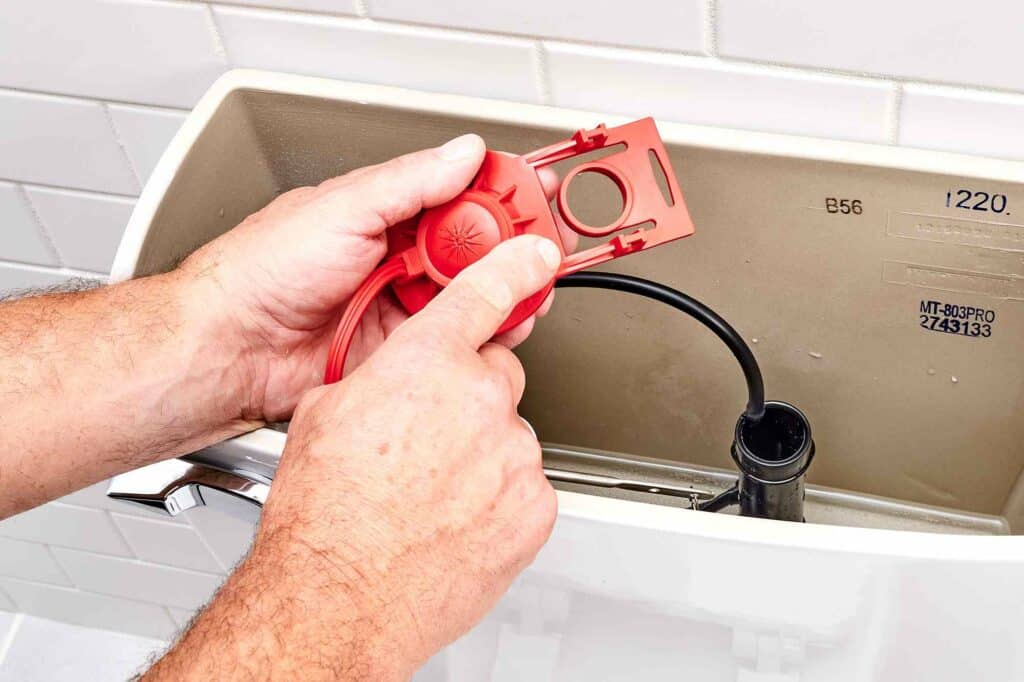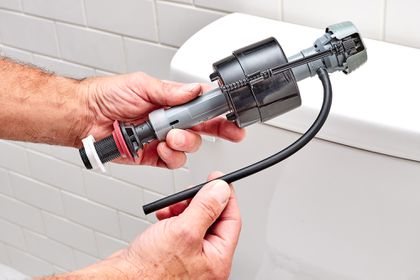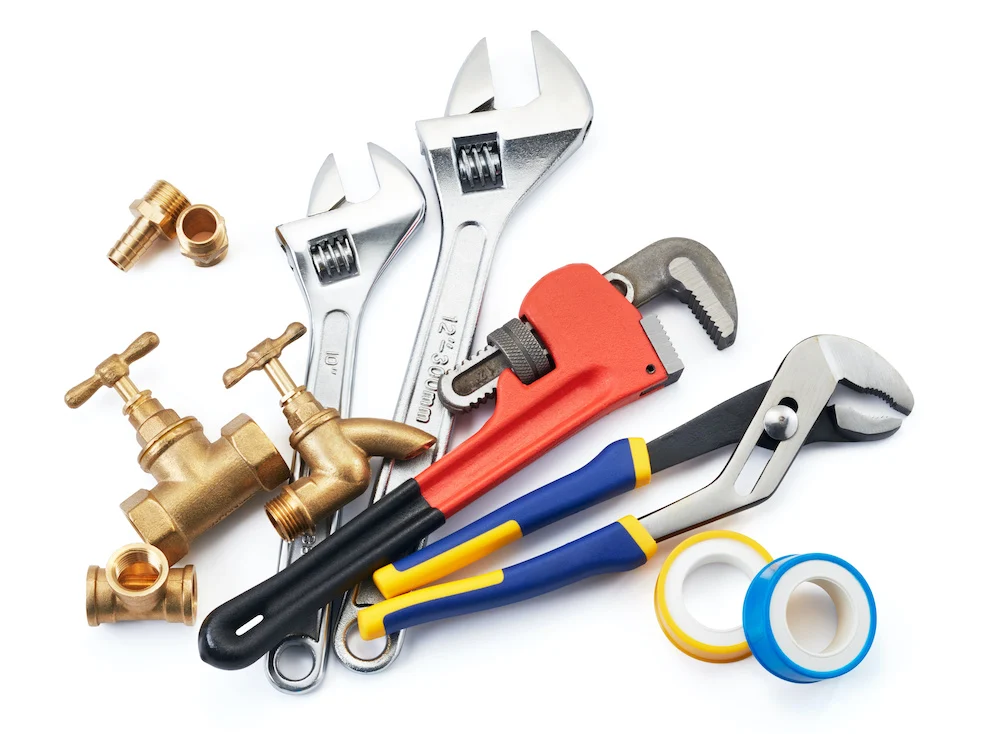Many homeowners experience an issue with a running toilet tank. It produces an irritating sound, and more importantly, it wastes water. This happens when the water keeps flowing out of a tank after you’ve flushed it, and the tank refills itself.
There’s a straightforward and inexpensive solution.
However, a worn-out flapper is causing it, and in an overwhelming majority of cases, you won’t even need to touch the flush valve seal. Replace the flapper, and you’ll probably be fine without having to call a plumber.
What Is a Toilet Flapper in The First Place?
The toilet tank has a few valves inside, and they let the water flow into the tank or from it – or shut it down when needed. The rubber seal inside your tank is called a toilet flapper. The toilet flapper is used to shut down the flush valve.
This valve opens up when you press the toilet handle or a button used to flush the toilet. If the flapper isn’t forming a tight seal around it – the water will keep running when it’s not supposed to.

The Fill Valve
The fill valve is sometimes called ballcock by plumbers. This valve has a floating part, which lifts as more water gets into the tank. The valve allows fresh water to fill the toilet tank once flushed.
As the water level in the tank drops, the floating part drops and opens the valve. Vice versa, water coming into the tank will lift the device – and close the valve so it doesn’t overfill. It’s useful for a homeowner to understand how the toil tank’s basics work so they can manage minor repairs.
Overflow Tube
The overflow tube is a part of the flush unit. You need to be aware of two main functions for this part of your toilet tank.
Its everyday use allows a stream of water from the refill tube to flow into the toilet tank.
The overflow tube also has an emergency use if a flush valve is broken. The tube is used as an escape route for the water running into the tank when the fill valve isn’t working correctly. That way, your toilet won’t overflow, and you won’t have a small flood on your hands.

The Trap and the Toilet Bowl
Toilet bowls have a trap at the bottom. The device seals the sewer system from the rest of the toilet. When you flush your toilet, the water from the tank will push through this seal. Therefore, all the water will end up in the drain pipes below your toilet and home.
It’s another seal that could become loose over time, but fixing it has nothing to do with the flapper, and you’ll notice a difference between the two issues due to the smell.
If your toilet bowl “trap” leaks, you should call a plumber and let them handle the repairs since they are much more complicated than replacing a flapper.
What Kind of Equipment You’re Going to Need?
A running toilet is a simple DIY project, and almost any homeowner will be able to fix it. All you need to fix it are scissors, some gloves to protect your hand during the work, and a new flapper to replace the one causing the leak.
Finding the same flapper type so you can replace the old one is probably the most challenging part of the process.
However, most toilet tanks have a standard size, so you can probably find the flapper online or at a local hardware store.
Replacing the toilet flapper is relatively easy since you can get a new one for just a few dollars. Here we will explain how to do it yourself in just a few simple steps.

Turn Off the Water
The first thing to do is to turn off the water so that you have an empty tank to work with. This is done by turning the shutoff valve on the supply line.
Rotate the valve until you can turn it no more, and you’ll shut down the water coming to your tank.
Drain the water in the tank by simply flushing it. It won’t get refilled if you’ve shut the valve correctly. Now, you can move on to fixing the toilet flapper itself.
Remove the Worn Out Toilet Flapper
The toilet flapper connects to the level used to flush the toilet and to the toilet flapper valve. Disconnect it from it, and you’ll be able to remove it.
In most cases, the toilet flapper is connected to the lever using a chain that hooks on both ends. Undo the clip on the top of the chain and let it drop. You’ll replace both the flapper and the chain since they are usually sold combined.
Now, remove the old flapper from the toilet flapper valve inside the toilet tank. Depending on the flapper type, it can snap off the flush valve or slide off. The flappers made out of hard plastic will snap.
Prepare the New Toilet Flapper So That You Can Install It.
Different toilets have different designs, and this step may vary on your toilet. However, the basic principles of how the tank and the toilet flapper valve operate are the same, which you should keep in mind during the repair.
In many cases, toilet flappers will have a ring on the back, and you need to cut it off with a good pair of scissors. This is the case when your flush valve has side pegs.
If your flush valve doesn’t have side pegs, the ring actually has a use – it’s how you’ll slide the new flapper into the place over the overflow tube.
Install the New Toilet Flapper
Replace a toilet flapper and hook it on the flush valve, as mentioned above. Make sure you form a good seal. Now, connect the chain of the new flapper to the toilet’s flush handle.
The chain should be relaxed if the lever is not used.
Make sure that the chain isn’t set too tight. If this is the case, it won’t be able to pull the flapper and open the valve as you press the lever and flush the toilet. In some cases, this will require a bit of trial and error until you get it right.
The same goes for the chain being too relaxed – it won’t open the valve when you push the lever.
Turn the water back on using the water supply valve so that you can test if the tank is working correctly.
Listen closely for the tell tale signs of leaking, such as hearing the running water after the filling cycle has completed. Also, ensure that the flushing mechanism works properly and that there’s trickling water anywhere.
Conclusion
Many homeowners feel overwhelmed by plumbing work because they are afraid of floods or don’t have the tools. As long as you know how the toilet tank works, you’ll be able to handle these minor repairs without having to call a professional plumber.
You can always shut the water off and let the plumber replace a toilet flapper for you if you get into trouble along the way.
